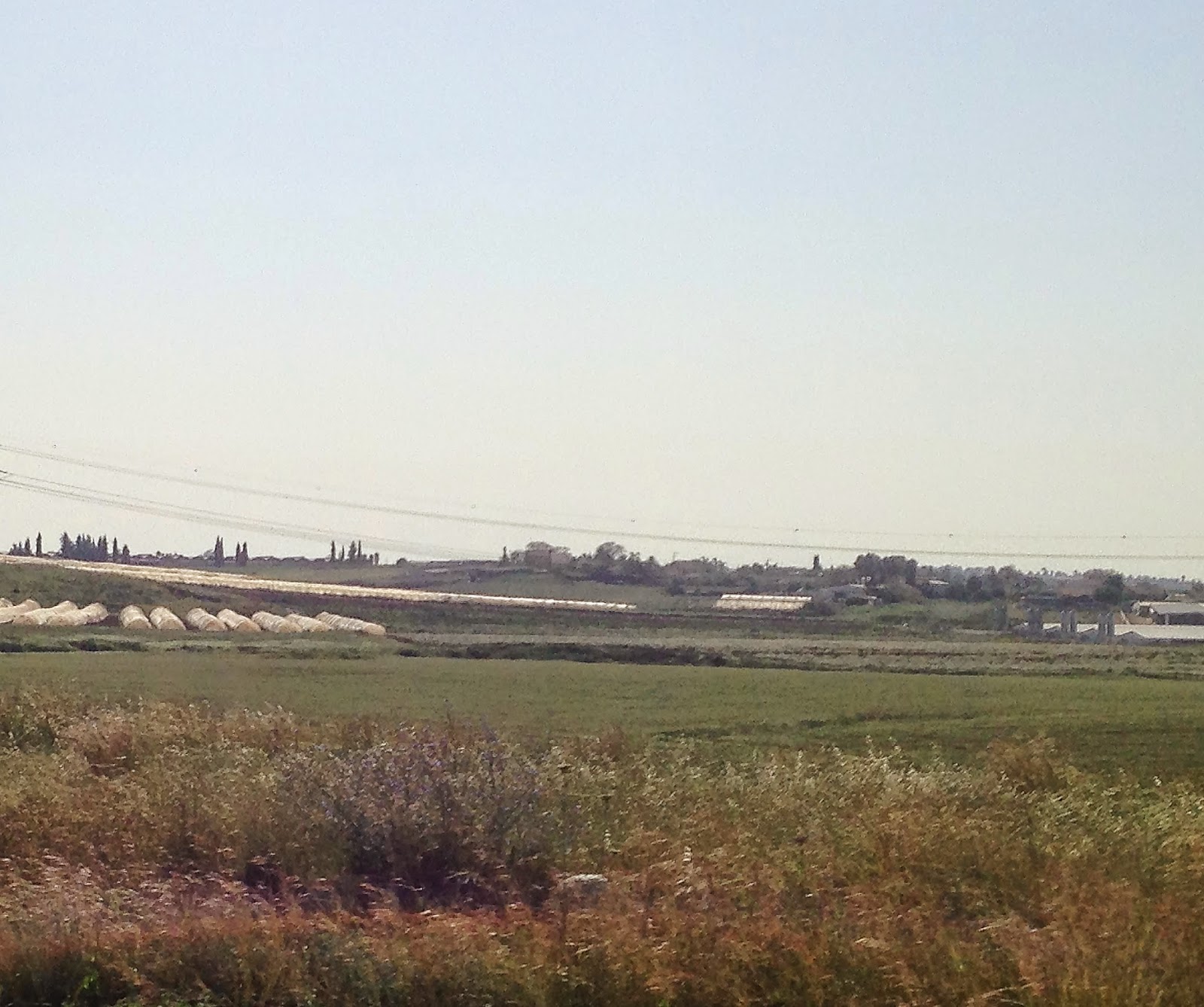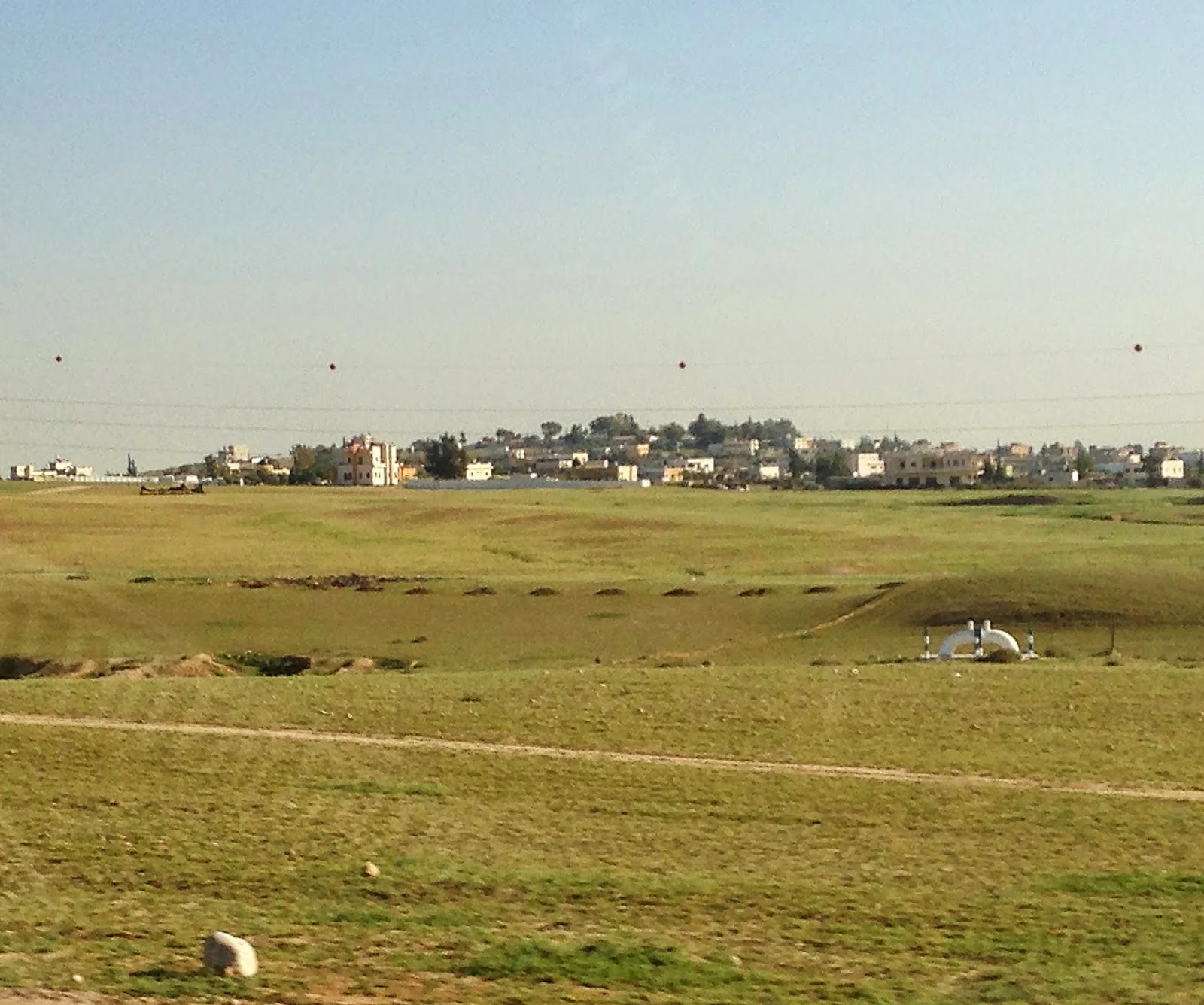Last Autumn, I heard my mate Edge, Mark Edgeller, was planning a return trip to Israel for around a week in Spring 14. The plan was to trying to catch up on a few missed Israeli birds, including the Nightbirds. Having been to Israel myself in Sept 94, I had managed to see the majority of the resident Israeli specialities. However, I had only succeeding in seeing Pharoah Eagle Owl and had drawn a blank on the remaining key Nightbirds: Hume's Tawny Owl, Nubian Nightjar & Egyptian Nightjar. Therefore, with the improvement in Israeli bird guides since 94 and their ability to show visitors the Nightbirds, it didn't take me long to join the trip. The other two going were mates of Edge: Nigel Jones & Simon Ingram, both local to the wider Southampton area.
Nigel, Edge & Simon: We took the birding seriously, with an ice cream needed to celebrate each of the ticks
It was an 07:00 Easy Jet flight from Luton to Tel Aviv, which arrived
about 14:00 local time. The car hire company were well organised with a
decent new car (a big improvement after the poor quality car on the
Western Saharan trip). We were quickly out of the airport & heading
South towards the Dead Sea: our base for the next 2 nights.
The scenery heading South for the first couple of hours was quite green
As we had all been there at least once before, the plan was to focus
on seeing World & Western Palearctic ticks for us, as well as, just get lots of
general birding in. The Western Palearctic (or Western P) is an area I
was introduced to when the landmark handbook, Birds of the Western
Palearctic (BWP), was started in the late 70s. This set the boundaries which
includes Europe to Western Russia up to the Ural Mountains, various Atlantic islands from Iceland to the Azores, North Africa (North of the Sahara) & parts of the Middle
East (but excluding the Southern part of the Arabian Peninsula). This had stood as a well
documented area for the last 45 years or so, but recently there has been
an alternative set of boundaries defined which adds in the rest of the
Arabian Peninsula. I have chosen to stick with the well established
boundaries, rather than to switch to the new boundaries as the
Southern parts of the Arabian Peninsula contain a significant number of
species which are more typical of NE Africa or the Indian Subcontinent.
As one of my mates described it, the new boundaries were right as it
introduced as lot of vagrants into the Western P (as well as allowing him to consider going for the newly described Omani Owl). Adding a lot of vagrants doesn't sound like a valid argument to me to change the boundaries.
There were a number of large villages along the way
It didn't take long to see the first Western P tick for the trip: Common Myna as one flew past the car soon after leaving the airport. Somehow, I had managed to miss this on the first trip and as they are an established introduced species to Israel, then it is no worse than ticking Pheasants or Ring-necked Parakeets in the UK. I should add at this point, that I keep a separate list of Introductions to my main list so this brought me to 662 & 7 Introduced (Cat C) species. Whenever possible, I will look to see a wild individual rather than an Introduced one, but there are a few species including Common Mynas that don't occur in the wild in the Western Palearctic.
Common Myna: Photographed at the end of the trip in Tel Aviv
We then turned off the main road & headed off towards the Dead Sea. The scenery rapidly changed and became very arid & dusty. The road drops steeply on the last bit towards the Dead Sea as it winds down. Road markers indicate the drop in elevation -200 metres, -300 metres until you finally end up at the lowest point on the Earth's surface around - 410 metres.
The road drops quite steadily towards the Dead Sea: The quality of the roads was generally very high & the traffic was light making driving a real pleasure
There is a viewpoint in the final stretch of the road, which gave good views over the Dead Sea.
Looking towards the Dead Sea: With Jordon on the far side of the Dead Sea
We were now in very arid conditions: The most significant vegetation in the wadi bottoms, where they must occasionally see a bit more water
Steppe Eagle: Heading North over the edge of the Dead Sea hills
Steppe Eagle: This is the orientalis subspecies, whereas the birds I was seeing in Gujarat were nipalensis
We arrived at our Dead Sea base for the next 2 days: the Aloni self catering flats in small settlement of Neve Zohar. Once we had unpacked the car, we had a chance for a half hour of birding in the fading light of the day.
Laughing Dove: This is the senegalensis subspecies which ranges across Sub-Saharan Africa to Arabia
Yellow-vented Bulbul: This is also known as White-spectacled Bulbul
Yellow-vented Bulbul: A couple of birds were feeding on the insects attracted by the marquee lights of the restaurant at Ein Bokek, where we ate that evening
Blackstart: This is the nominate melanura subspecies. Blackstarts occur from Mali to Somalia & parts of the Arabian Peninsula
Blackstart: One of my favourite birds of the region. They have a distinctive black tail
Palestine Sunbird: Female of the nominate osea subspecies
which ranges from Turkey to Israel & parts of the Arabian
Peninsula. A second subspecies occurs in Sub-Saharan Africa from Lake
Chad to South Sudan, extreme NE Zaire & NW Uganda
Palestine Sunbird: Female sticking her tongue out to appear to extend the curvature of the bill
House Sparrow: This is the biblicus subspecies reflecting that BWP isn't the only significant book for the region

















